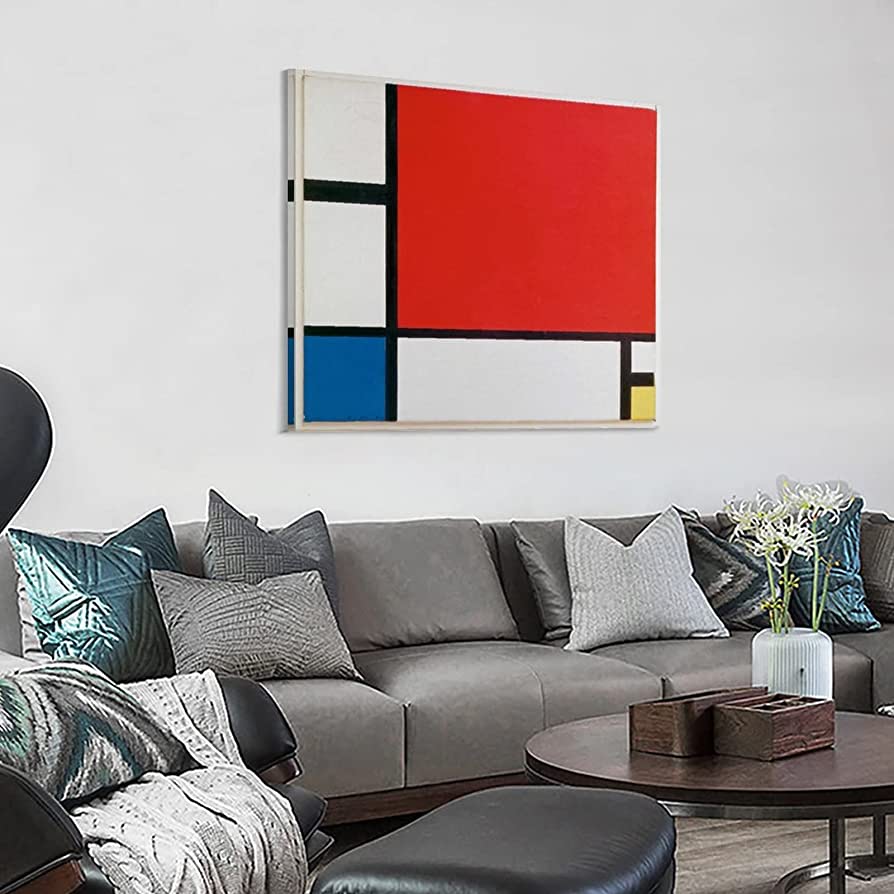Description
The painting "Composition with Red, Blue and Yellow" is an iconic work by the Dutch artist Piet Mondrian, created in 1930. This work is considered one of the most representative pieces of the artistic movement known as Neo-Plasticism or De Stijl.
Neoplasticism arose in the Netherlands around 1917 and sought to achieve a perfect balance through the purity of shapes and colors. Artists who were part of this movement, such as Mondrian, advocated geometric abstraction and limited their color palette to the three primary colors (red, blue, and yellow) as well as non-colors (white, black, and gray).
In "Composition with Red, Blue, and Yellow," Mondrian employs a grid of vertical and horizontal black lines that divide the canvas into multiple rectangles of different sizes. These rectangles are filled with the primary colors mentioned, as well as white. The arrangement of colors and lines in the painting reflects the search for a visual balance, reflecting the essence of neoplasticism.
This work is also an example of how Mondrian sought to eliminate any reference to reality in his paintings and how the simplification and abstraction of shapes and colors allowed him to convey a message of harmony and purity. The "Composition with Red, Blue and Yellow" is a key piece to understand the development of geometric abstraction in the history of art and Mondrian's impact on subsequent generations of artists.
In addition to its influence on the art world, Mondrian's "Composition with Red, Blue, and Yellow" and style have influenced various creative fields such as graphic design, architecture, and fashion.
A curiosity about Mondrian's impact on fashion is the fall 1965 collection of French fashion designer Yves Saint Laurent. The collection, called "Mondrian", included dresses that incorporated the distinctive style of Mondrian's works, using black lines and blocks of primary colors on a white ground. These dresses became a fashion icon of the 1960s and are an example of how Mondrian's art has transcended the borders of painting to inspire other creative fields.
In terms of architecture, Mondrian's neoplastic style has influenced building design and urban planning. The architect and founder of the De Stijl movement, Theo van Doesburg, applied neoplastic principles in his architectural designs. A notable example of Mondrian-inspired architecture is the Rietveld Schröder House in Utrecht, the Netherlands, designed by Gerrit Rietveld in 1924. The house features a straight-lined façade and a color palette limited to primary colors, just like in the Mondrian works.
Mondrian's visual style has also been used in advertising campaigns and in the design of album covers, such as the album "The Grid" by the British new wave band The Escape Club, released in 1988.
The legacy of Mondrian's "Composition with Red, Blue and Yellow" and his neoplastic style have left an indelible mark on the world of art and other areas of creativity, demonstrating the strength and versatility of his aesthetic ideas.




